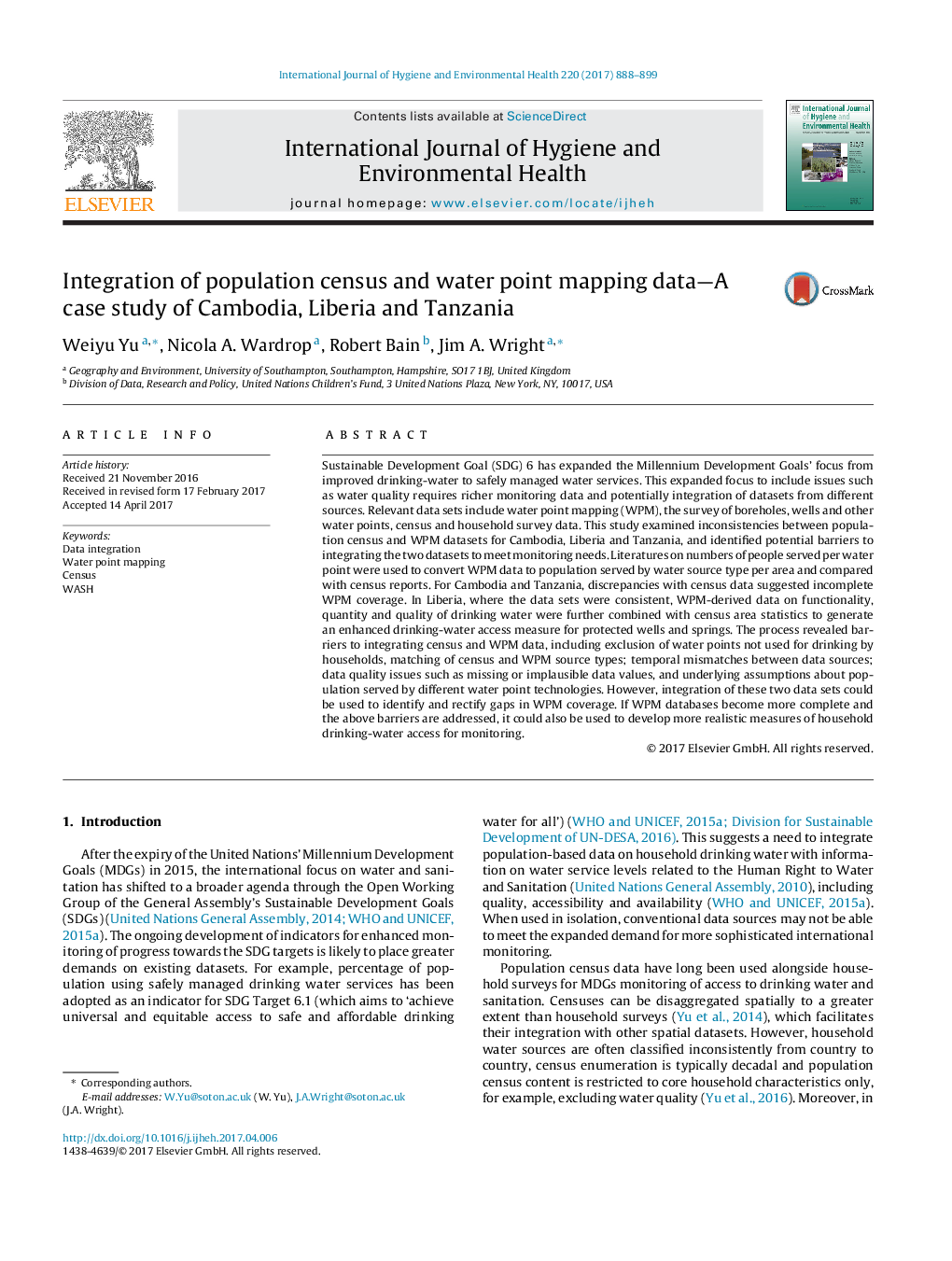| کد مقاله | کد نشریه | سال انتشار | مقاله انگلیسی | نسخه تمام متن |
|---|---|---|---|---|
| 5560587 | 1561872 | 2017 | 12 صفحه PDF | دانلود رایگان |
Sustainable Development Goal (SDG) 6 has expanded the Millennium Development Goals' focus from improved drinking-water to safely managed water services. This expanded focus to include issues such as water quality requires richer monitoring data and potentially integration of datasets from different sources. Relevant data sets include water point mapping (WPM), the survey of boreholes, wells and other water points, census and household survey data. This study examined inconsistencies between population census and WPM datasets for Cambodia, Liberia and Tanzania, and identified potential barriers to integrating the two datasets to meet monitoring needs. Literatures on numbers of people served per water point were used to convert WPM data to population served by water source type per area and compared with census reports. For Cambodia and Tanzania, discrepancies with census data suggested incomplete WPM coverage. In Liberia, where the data sets were consistent, WPM-derived data on functionality, quantity and quality of drinking water were further combined with census area statistics to generate an enhanced drinking-water access measure for protected wells and springs. The process revealed barriers to integrating census and WPM data, including exclusion of water points not used for drinking by households, matching of census and WPM source types; temporal mismatches between data sources; data quality issues such as missing or implausible data values, and underlying assumptions about population served by different water point technologies. However, integration of these two data sets could be used to identify and rectify gaps in WPM coverage. If WPM databases become more complete and the above barriers are addressed, it could also be used to develop more realistic measures of household drinking-water access for monitoring.
Journal: International Journal of Hygiene and Environmental Health - Volume 220, Issue 5, July 2017, Pages 888-899
